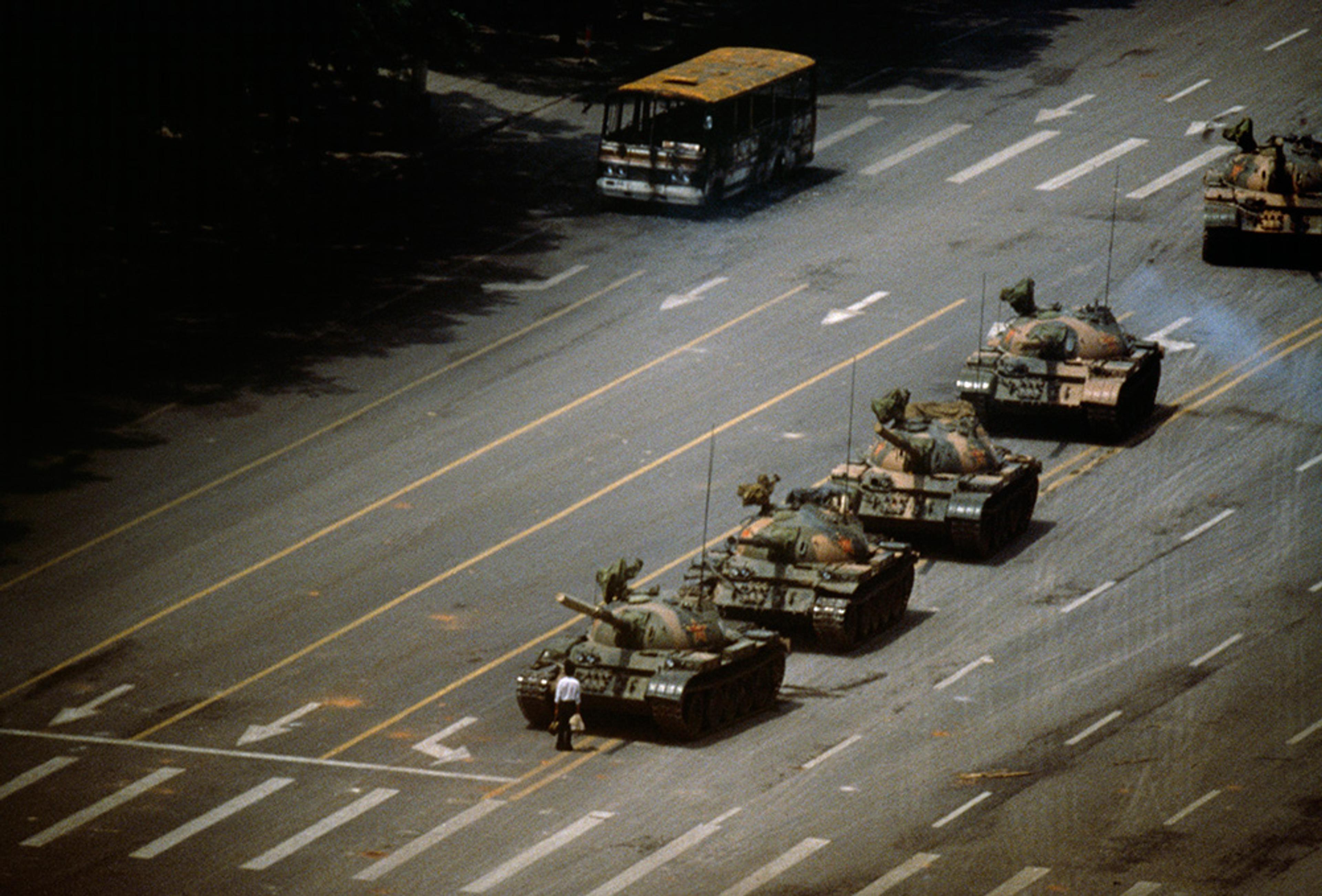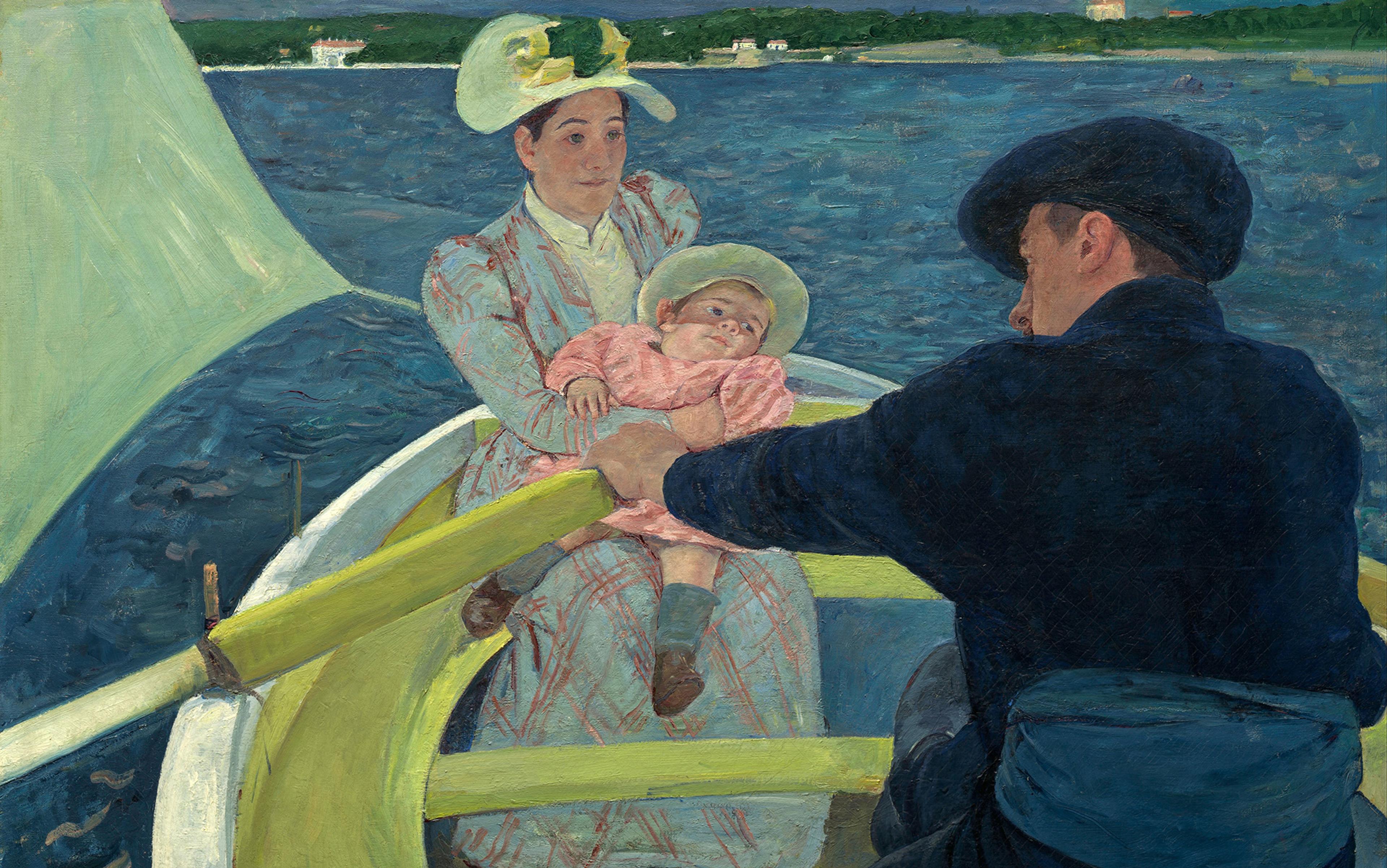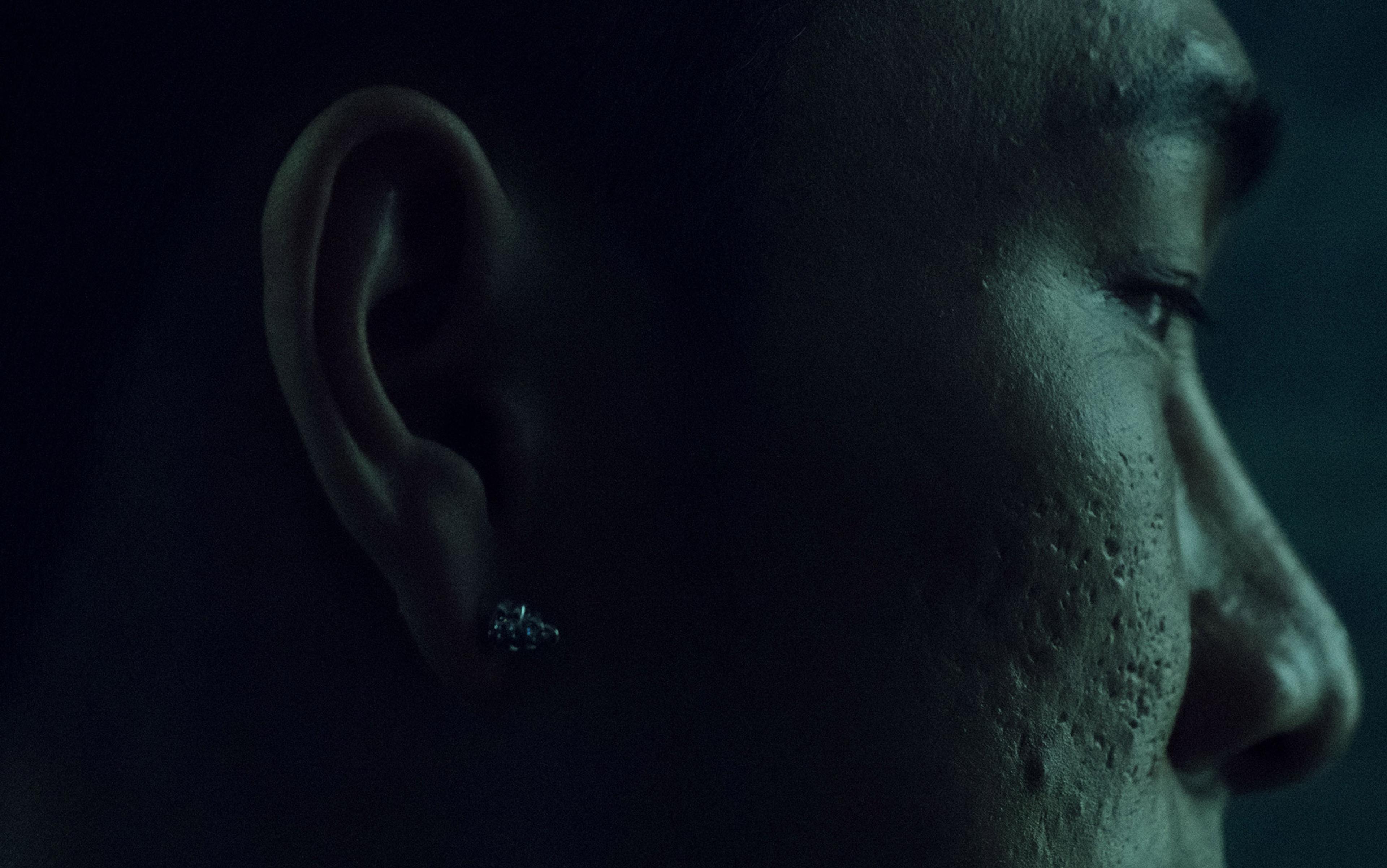The preeminent Victorian portrait photographer Julia Margaret Cameron wrote that, when photographing important subjects, ‘my whole soul has endeavoured to do its duty towards them in recording the greatness of the inner as well as the features of the outer [subject].’ Consider this portrait of Cameron’s niece, Julia Jackson (many of Cameron’s most interesting portraits were of women). It is a powerful and distinctive image. Suppose you were asked to explain what makes it such. Having just read what Cameron said she was trying to achieve with her portraits, you might be tempted to say something along the lines of: ‘it captures the essence of the person being photographed.’ This is, in any case, the sort of thing one tends to hear said of good portrait photographs. Of course, a few qualifications might also be added, to head off criticisms: ‘I mean, it likely captures, at a particular moment, something significant of the essence of the person being photographed.’ Perhaps it will immediately be admitted that it is difficult to know whether or not this photograph does really capture something significant of Jackson’s essence, given that no one now alive knows what she was like.
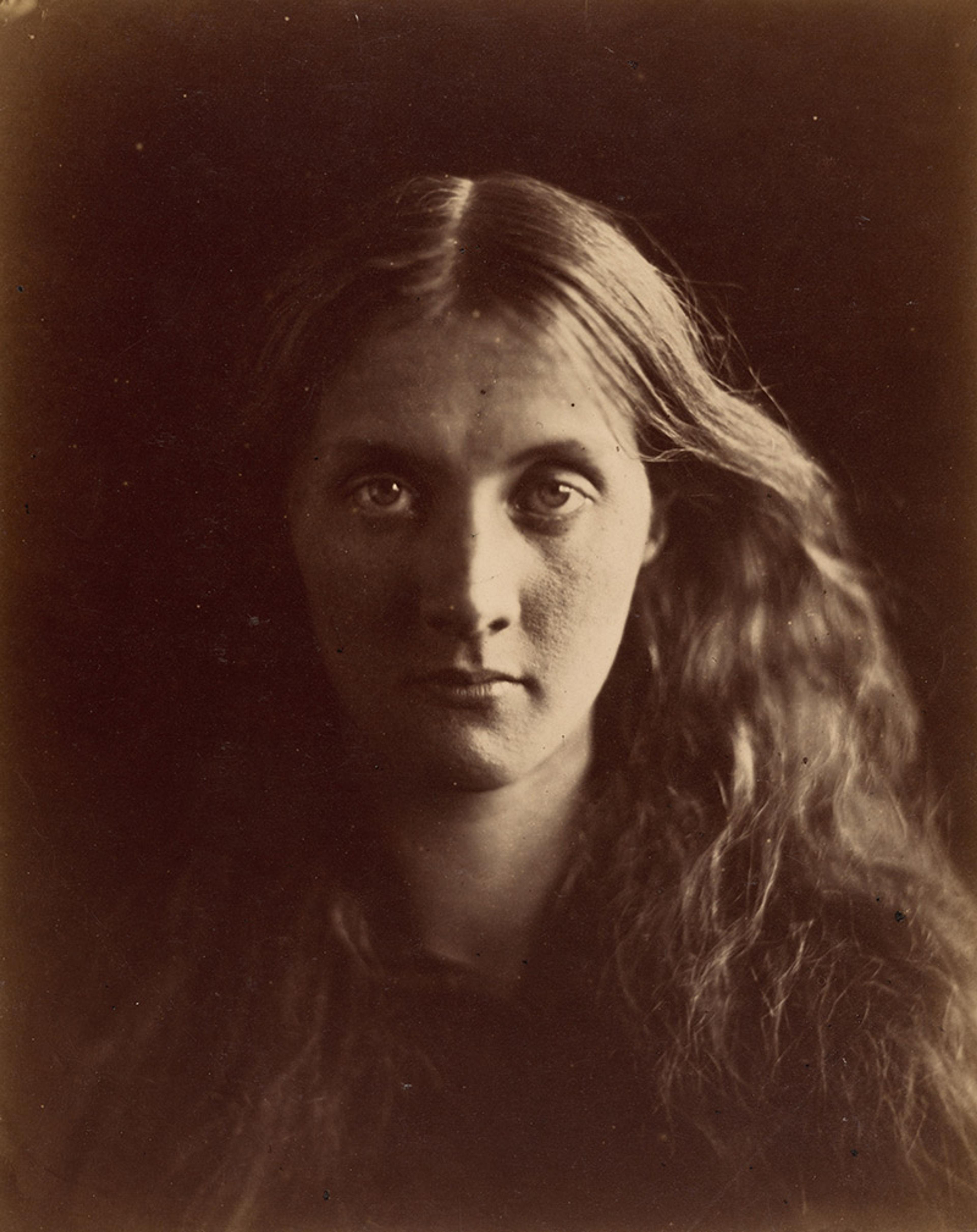
Julia Jackson (1867) by Julia Margaret Cameron. Courtesy the Art Institute of Chicago
What should we make of the tendency to describe portrait photographs as capturing something of the essence of a person, at a certain moment? I would suggest that despite this great photographer’s endorsement of something like this thought, we should be wary of it. It can be misleading as a standard for describing good portraits, and it can be stultifying when it is treated as an ideal to be aimed at by portraitists. There are many different ways that portraits, or photographs of people more generally, can be aesthetically appealing and valuable, and the tendency to gravitate towards this ideal should generally be resisted, tempting as it may be. It should be resisted on both artistic and philosophical grounds. Let’s start by unpacking the qualified claim itself.
To begin with one of the qualifications, there is the idea of capturing a person at a moment in time. In fact, early photographs, such as the one of Jackson above, typically had long exposure times. Sitters would need to put significant effort into staying very still, and even small movements could leave traces in the final photograph. Cameron actually thought of the softness produced in her portraits by movement blur, as well as by imprecise focusing, as a positive feature of them. Even after it becomes possible to use much faster shutter speeds, it remains the case to this day that light events are still recorded by cameras during a period of time, rather than at a moment in time.
When we consider that it’s now common to take photographs at a shutter speed of one-100th of a second or faster, it’s easy to think of this as being more like taking a photograph at an exact moment in time, but the movement blur that can appear in photographs taken even at speeds as high as one-100th of a second puts the lie to this thought. Recordings of movement in photographs do not straightforwardly correspond to anything in normal human vision, and the possibility of using a long exposure time is still often treated as a creative option, with very different outcomes depending on whether we are talking about a ‘long’ exposure of one-fourth of a second – as in this photograph I took recently of pedestrians in Boston, as I waved my camera just so – or leaving the shutter open for seconds or minutes (the latter is common when it comes to landscape photography, where choppy water may appear smooth, for instance).
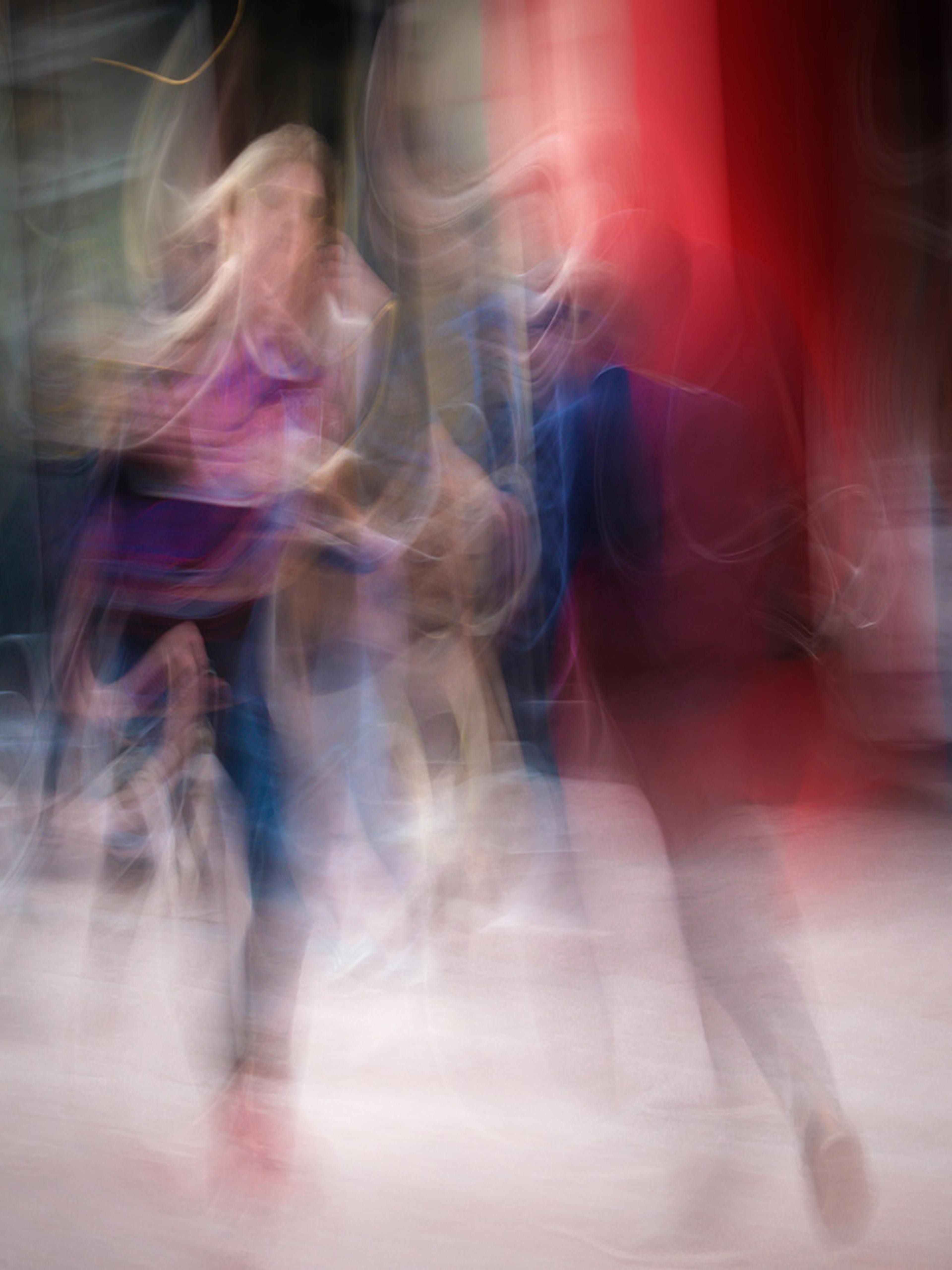
In a rush © Daniel Star
The creative use of shutter speeds is related to a second problem with the common thought that we are analysing. Photographs ‘capture’ scenes only in a highly attenuated sense. We do not see the world in the way we see scenes in photographs. Skilled photographers exercise a significant degree of control over the content and production of photographs in a large number of ways, both before the shutter closes and afterwards. In a great many cases, especially when particular prints are even just informally ‘certified’ by the photographer, it is best to follow Ansel Adams’s thought that photographers make photographs, rather than merely take them.
So much for a naive way of thinking about what it means to ‘capture’ a scene or a person. We are still left with the idea that people have an essence that images can depict in a truthful fashion (this is sometimes thought of as an ideal with respect to portrait paintings, and not just portrait photographs, it might be noted). Do people have individual essences, and are they such that significant aspects of them might be revealed in depictions of their physical countenances? As a philosophy professor, I’m tempted to start picking apart the idea of an essence of this kind, but that would (sadly) be beside the point in the present context.
It’s uncontroversial to say that individual people have particular physiological and psychological characteristics that they and others find significant, and it isn’t problematic to say that photographs can in some ways contain features that line up with some such features. This may be all that people have in mind when they think of photographs as capturing the essence of people. You may have a friend who is typically a happy and relaxed person, with a distinctive smile, and you take a photograph of her at a moment when she is looking happy and relaxed in a particular way that she tends to. Of course, it isn’t guaranteed that she will look happy and relaxed in the photograph (the muscles in our faces are constantly moving, so you may get unlucky using a fast shutter speed and be surprised to find that she appears to be worried), but if she does you might say you have captured something of her generally happy and relaxed nature. When successful in this way, photographs that present us with a typical pose for a particular person may, for people who know them at least, come to function as a synecdoche for their character. Portraitists who follow this approach need to know a fair amount about their subjects’ characters. But what about when we know very little about the subjects of a photograph?
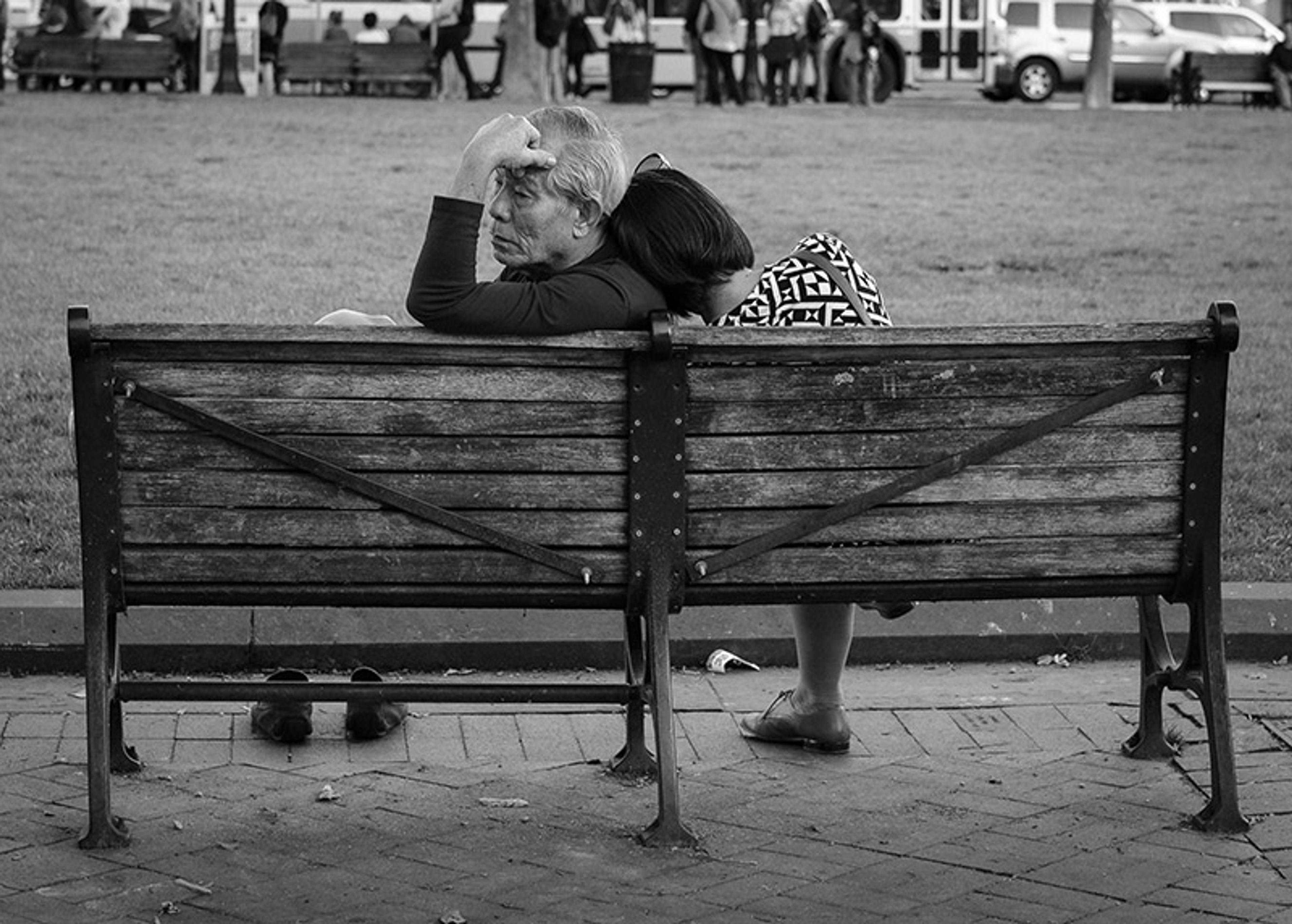
Thinking and resting © Daniel Star
Consider two street photographs of people that I know are ‘candid’ or unposed because I happen to have taken/made them. The banner image at the top of this page shows a man appearing to suddenly come to a halt (close to an easy-to-miss reflection of the photographer, as it happens), in a manner that suggests he has temporarily forgotten what activity he was in the midst of doing, or what he is meant to do next. Interpreting the image immediately above, one might think it is of a tired man with his legs up (a sock just showing on one side) in the midst of thinking about something, while his loved one rests on his back. Knowing they are candid, one might wonder whether the descriptions I just provided of these photographs line up with the reality before the camera at the time. In the second case, I suspect (but do not know) the description I just provided is accurate in this sense, but in the first case I have no idea whether or not it is, even though I took the photograph. It’s quite possible that this man was doing something completely unrelated to my interpretation. As for the essence or character of these subjects, and whether the poses in question are typical or untypical of them, we remain in the dark.
Does it really matter, when appreciating photographs as artworks, whether or not we know that an interpretation of people in the photograph that we favour lines up with reality (on the basis of an independent source of evidence)? In a great many cases, it does not. Street photography, which one might take to include candid street portraits, is one whole genre where it usually doesn’t matter. One might go further and say that part of what we enjoy when viewing many photographs, in this genre but also others, is that we are aware that our interpretation of the photograph we are looking at is one that we can only ever say may line up with reality. Ignorance of this specific kind can be aesthetically enjoyable. This type of tantalising ignorance will be lacking in our experience of a purely AI-generated image that we know to be such, even if it presents to us a scene featuring people in a way that means we might easily confuse it with a photograph. Consideration of such digital images, whose creation didn’t depend on particular light events in the right way, can help us understand what is distinctive of photographs, even on a fairly permissive ‘new theory of photography’ that would classify some hard-to-categorise images, such as Gerhard Richter’s ‘Betty’ (1988), as photographs.
A different way in which literal truthfulness is sometimes clearly not a dominant concern comes to the fore when we consider photographs that purposefully present to us a fictional narrative, albeit a much more fragmentary and indeterminate narrative than a typical fictional movie or novel would. Fictional narrative structures can also be made less fragmentary than they otherwise would be when photographs exist as part of a curated series, and this is one of a number of reasons why it can be an error to focus too much on attempting to appreciate or analyse single photographs in isolation from the series they were made to fit into. Various projects of Cindy Sherman, Duane Michals, Alec Soth and Zanele Muholi – to name just a few important contemporary photographers who have focused on creating narrative portraits in a series – all bear this out. It is also important not to forget that the purposeful use of fictional narrative elements in photographs has a long history: many of Cameron’s photographs, for instance, were staged to represent mythical or biblical scenes. Despite this element of continuity with tradition, the best of Sherman’s self-portraits are novel and strike us as richer in subtle, often ambivalent, narrative details.
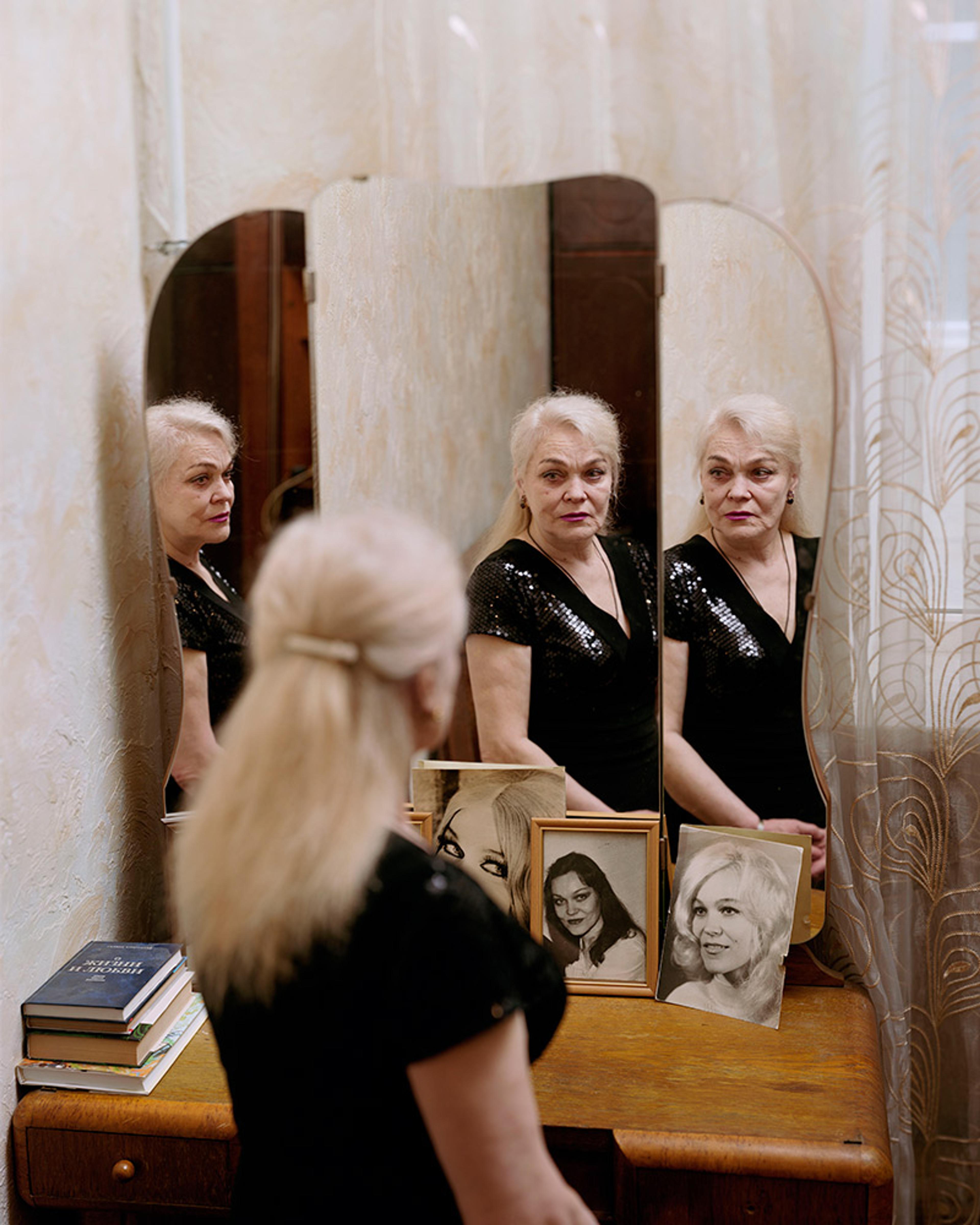
Galina. Odessa, Ukraine 2018. ©Alec Soth/Magnum Photos
The problem as I see it isn’t that photographs don’t have veridical features (features isomorphic to features of the world in front of the lens when the photograph was taken), to a lesser or greater extent. It would be a mistake to deny that they do, or indeed that part of what is involved in appreciating photographs involves knowing this. Rather, the problem is that there is a tendency to overvalue or even fetishise veridicality when we move from contexts where the evidential status of photographs rightly matters to us more than anything else – the courtroom, the newspaper and the historical archive – to contexts where the aesthetic features of photographs are what we are being asked to consider most significant. When photographs are art, whether of the amateur or professional kind, there are a range of aesthetic standards that it may or may not be appropriate to apply in any specific case (genre classifications, as well as more specific information about particular artistic projects, help us), and many of these are not concerned with presenting the world to the viewer in a veridical fashion.
Some readers will no doubt think they would never have been tempted to use anything like that phrase I started with to describe good portrait photographs – they might avoid speaking of capturing the essence of people. I’m not claiming that only people who do use that sort of phrase make the mistake I have in mind. It’s perhaps more common among critics to complain of certain artistic photographs of people that they simply don’t look like the person who was photographed. Richard Avedon and Diane Arbus, for instance, have attracted this kind of criticism. The philosopher and art critic Arthur Danto complains, in a much-read paper on photography titled ‘The Naked Truth’ (1998), that Avedon’s photograph of Isaiah Berlin taken in 1993 (not one of Avedon’s better photographs, one might independently think) doesn’t look like Isaiah Berlin himself, due to the specific techniques that Avedon adopted for taking portrait photographs. We are told that Avedon is guilty of deception because of the ‘natural authority’ people now and in a hundred years hence will attach to photographs, thinking ‘photographs never lie’. This is very odd, given that Danto himself makes much of the fact that photographs can be non-veridical in a number of respects.
Instead of accusing artistic photographers of deception, why not call for better education when it comes to understanding that artistic photographs are often going to be non-veridical in important respects? And, regardless of whether such education is available to people, why should we hold any art (or, indeed, a whole artform) hostage to public misconceptions? These are not questions Danto considers in his essay. We don’t think it’s a valid aesthetic criticism of Vincent van Gogh’s paintings, for instance, that even well-educated people were inclined to misunderstand what he was doing around the time he painted them, and it seems irrelevant that many may still do so; rather than suggest that Van Gogh should have instead employed different techniques, we might say that people should instead do a better job of trying to understand and appreciate his paintings. As for Avedon’s photography, a fairer assessment of it would need to include more and better examples.
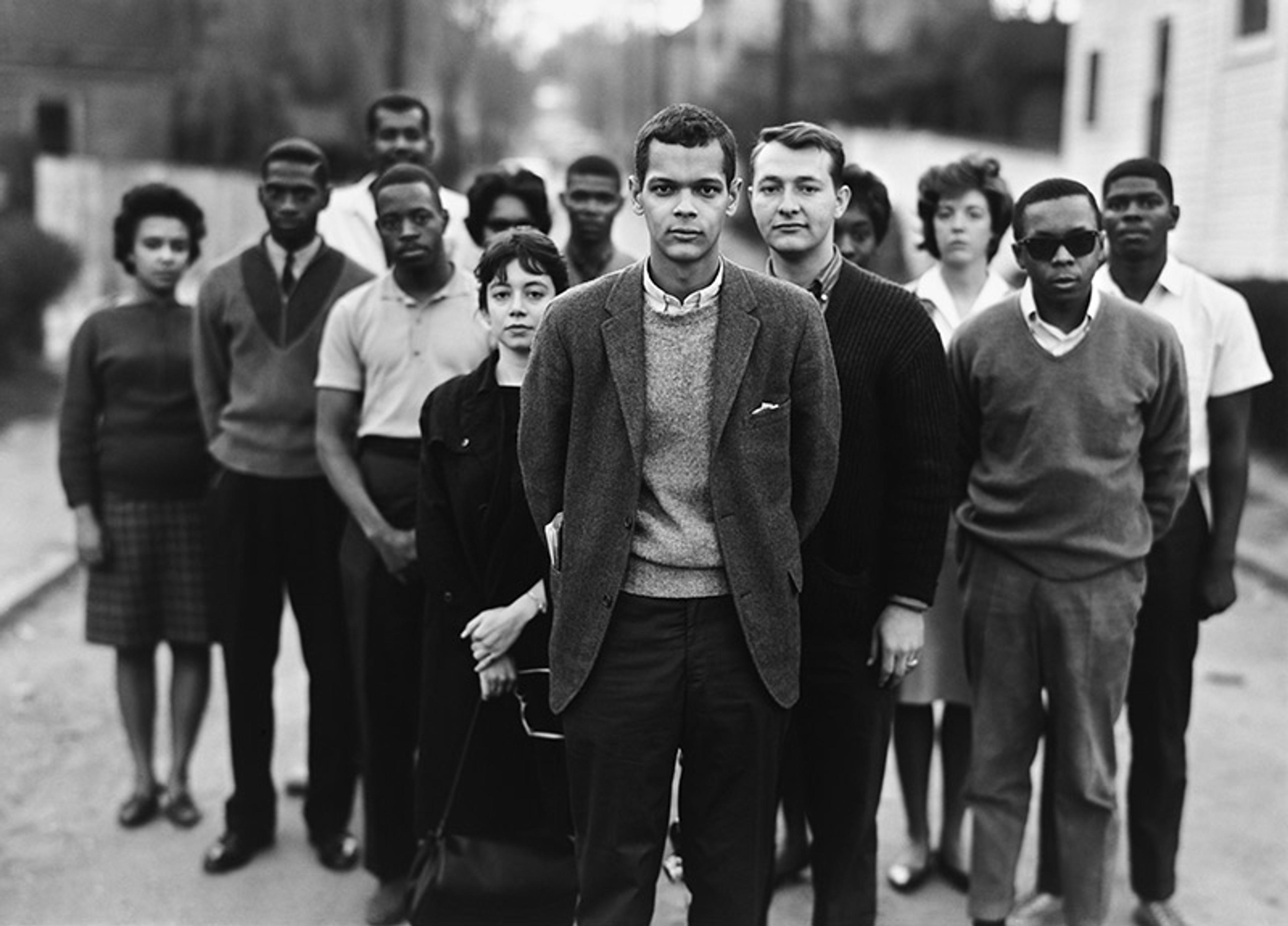
Student Nonviolent Coordinating Committee Headed by Julien Bond, Atlanta, Georgia by Richard Avedon, 23 March 1963. © The Richard Avedon Foundation
Danto’s talk of how in a hundred years hence we will still think of photographs with the same misconceptions as we did in the 1990s (when his article was published) appears quite incautious now that we worry a good deal about the political use of deep fakes and wonder how we might be able to tell the difference between photographs and AI-generated images. For all the issues that we now rightly worry about, we might hope that a silver lining of living in the age of AI-generated images and various digital computing effects on smartphones (eg, filters, fake bokeh and the automatic combining of multiple exposures) may be a significant and widespread diminishing of naivety when it comes to taking photographs at face value.
No portrait photographer has attracted misconceptions and divided critics as much as Arbus (and many find her work more interesting than Avedon’s). I obviously cannot hope to do justice here to either her work or the historical debate concerning its nature and value. Suffice to say, I agree with those admirers (among them the philosopher David Davies) who contend that, far from objectifying her subjects or aiming to have us view them as freakish or pitiful, Arbus produced a highly distinctive body of work that attests to the humanity of her subjects. Arbus’s empathetic approach is concerned with how human beings present themselves to others – their projections, rather than their essence – yet is stylistically all her own. If portrait photography simply invited us to look at people, there would be little room for recognising the distinctive stylistic virtues of Arbus’s work.
The documentary aspect of photography is even more to the fore in Nan Goldin’s work, yet here too we see a particular ethical and artistic vision at work (one that is quite different from Arbus’s), as is made clear in Laura Poitras’s wonderful documentary All the Beauty and the Bloodshed (2022). Early in her career, Goldin would invite her friends and acquaintances to events in New York where she would present slideshows of photographs that she had taken of them, attuning herself to their feedback, and even allowing them to destroy photographs of themselves that they did not like. It appears she viewed her work at that time as providing a space in which her photographic subjects, often queer, could experiment with ways of representing themselves to each other, and to an often-hostile world; combatting hatred and bigoted stereotyping from mainstream America, and building solidarity. This early policy of allowing others to influence the curation of her photographs can be contrasted with her later more than justifiable decision to publish photographs of herself as a victim of partner abuse, and of her abuser, against his wishes.
The focus on co-creation between subject and photographer that one sometimes finds in Goldin’s work makes for an attractive way of approaching the making of photographs of people. She doesn’t mention Goldin, but in her essay ‘Respecting Photographic Subjects’ (2019), the philosopher Macalester Bell, influenced by Danto, claims: ‘Ideally, an artist who respects his subjects, qua artistic subjects, will collaborate with them in creating the final image.’ I think that this is too strong. We might instead take the collaborative ideal that Danto and Bell valorise, attractive and productive as it is to some photographers, to be just one among a number of legitimate artistic ideals with respect to making great photographs of people.
One might be tempted to suggest Goldin’s work provides an example of how our selves can be constructed in a narrative fashion through portraits, but the philosopher Cynthia Freeland argues convincingly in Portraits and Persons (2010) that this is more than any series of portraits can ever hope to provide. Still, we need not deny that some of the portrait photographs produced by Goldin (or by Dawoud Bey, to mention a different example) succeed in promoting empowering representations of particular marginalised people and their communities.
When it comes to moral judgments of photographic artworks or the artists that produce them, there are many types of concerns we might have. It’s far from clear that collaboration between photographers and subjects is crucial. I cannot here discuss many of the moral issues that arise with respect to photography, but one particularly relevant issue has to do with our individual preferences that other people represent us in various ways and not others. Danto suggests that a photograph of a person ought to respect their own self-conception and will otherwise count as morally disrespectful. I agree with Bell that Danto’s idea can’t be right (although I also disagree with Bell’s own variation on it). Of course, we all wish to have ourselves represented to the world in some ways and not others, but the moral issues here are rather complex.
For a start, our own representations of ourselves are often inaccurate, and either overly positive or overly negative. Being offered interpretations of ourselves by others can help us better understand who we are, and help us be more modest about our powers and rights to shape how others view us, as individuals (following Bell, I am here referring to individual characteristics, such as messy hair or lopsided grins, rather than characteristics that are selected or highlighted to reinforce stereotypes).
A paucity of stories can be dehumanising, given people’s many aspects
I certainly do not wish to deny that it’s possible for photographs to be morally disrespectful. Clearly they can be, and sometimes are. But I think the problem with morally disrespectful photos is not usually best explained by pointing out that they fail to align with individual self-conceptions, and the creation of fictional narratives or art that is not veridical in this respect is not ipso facto disrespectful. I can’t here hope to provide a full account of what can make photographs disrespectful, but let me end by gesturing at a couple of things I take to be crucial in many cases. First, photographs can provide or reinforce harmful stereotypes with respect to particular groups of people that are oppressed or considered foreign or ‘other’ to an audience. Second, photographs can be dehumanising even independently of how they might rely on or reinforce stereotypes. Photographs of people who are suffering or are dead can be of this kind, no matter what social categories the photographic subjects belong to, although not all photographs that feature suffering or death are dehumanising.
One way to understand what is involved with dehumanising photographs is to adopt a Kantian view according to which what is essential to our humanity, and what is denied in cases of dehumanisation, is our rational agency – our capacity to autonomously and intelligently set goals for ourselves as individuals and pursue them in a rational fashion. Danto’s suggestion that respect involves having control over how one’s self-conception is represented by others can be thought of as one version of this view.
An alternative perspective, which I favour, would have us focus instead on a multitude of significant, rich features that human lives typically possess, from the enjoyment of simple pleasures and the avoidance of pain, to activities that involve learning about aspects of the world or practical achievements, to engagement in loving relationships (both familial and romantic), to participation in a variety of cultural rituals, including engagement with art (either ‘low’ or ‘high’). One significant aspect of our humanity is our rational agency, of course, but it may be a mistake to make this alone the centrepiece of ethics. Dehumanisation can take many forms, depending on what aspects of a person’s humanity are being denied or obscured. The idea that a paucity of stories can be dehumanising, given people’s many aspects, is proposed and defended by the Nigerian novelist Chimamanda Ngozi Adichie in her TED talk ‘The Danger of a Single Story’ (2009).
If we return to the idea we started with, that photographs of people might capture their essence, we can now add that a key reason this idea is so problematic is because no individual can be captured in a single story, whether it is provided by a photograph or in some other way. In many cases, the fact that people cannot be easily or adequately captured in stories does not undermine the artistic value of particular photographs, but we should endeavour to keep in mind this fact concerning stories and not succumb to a very human tendency to forget it.

